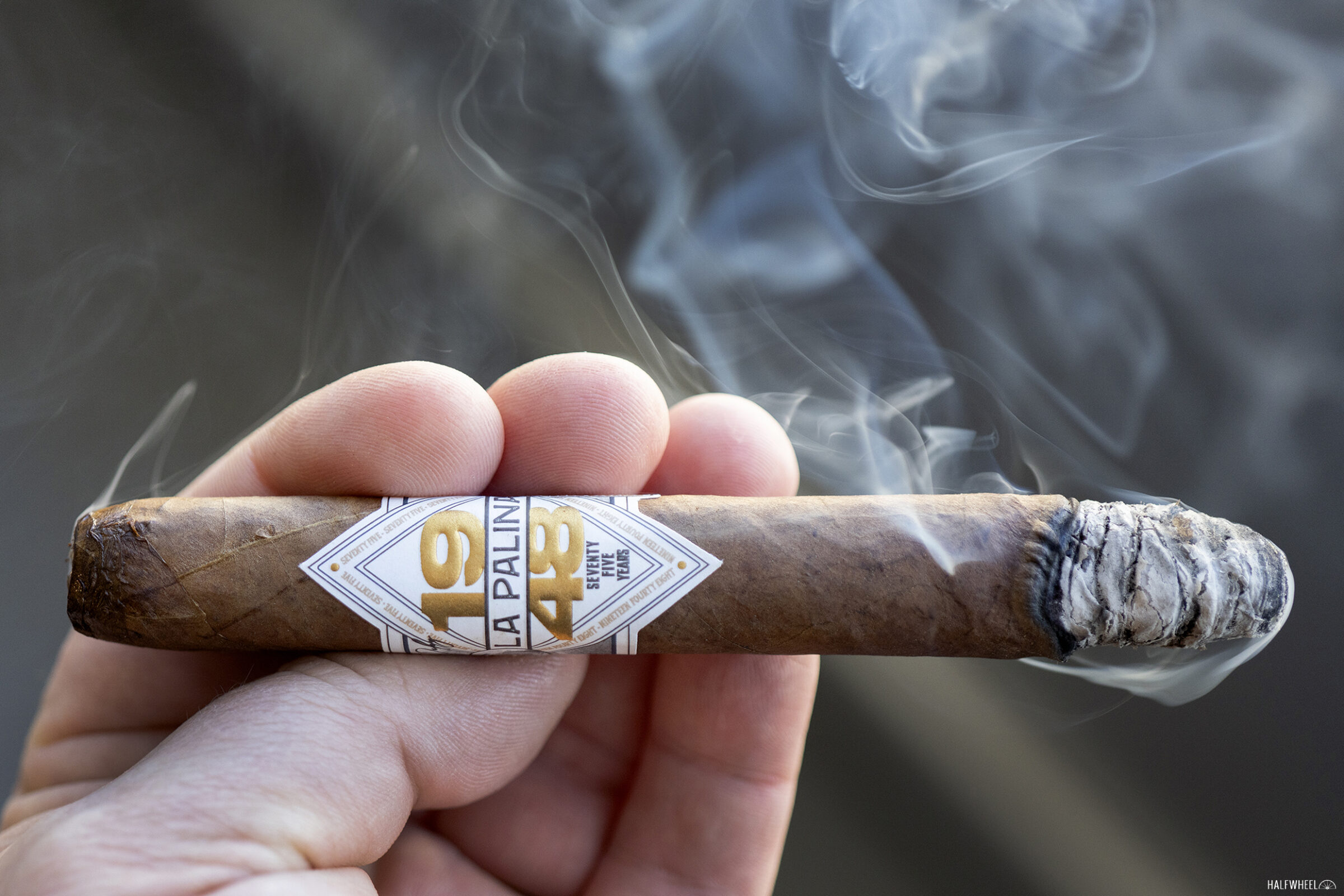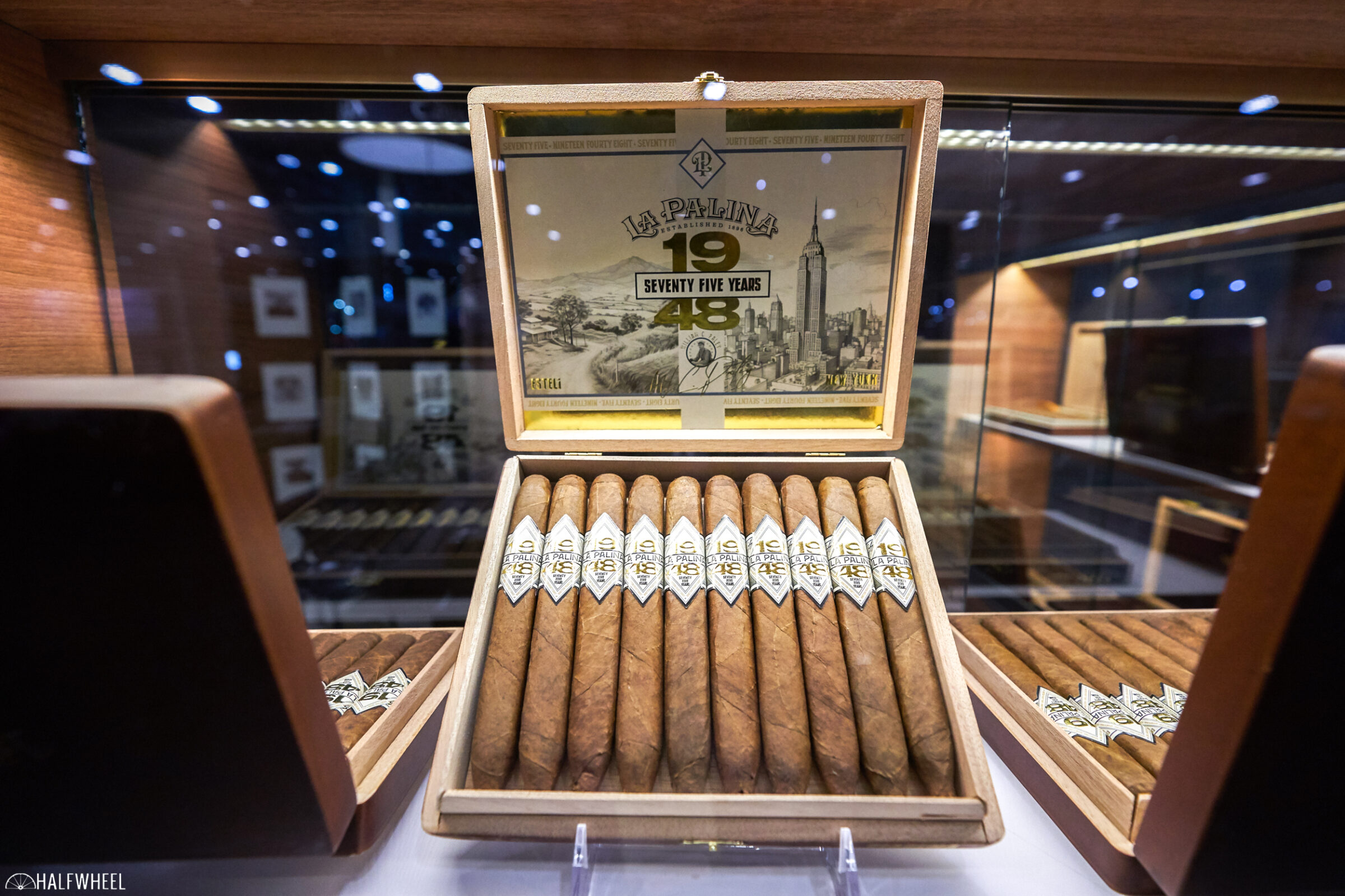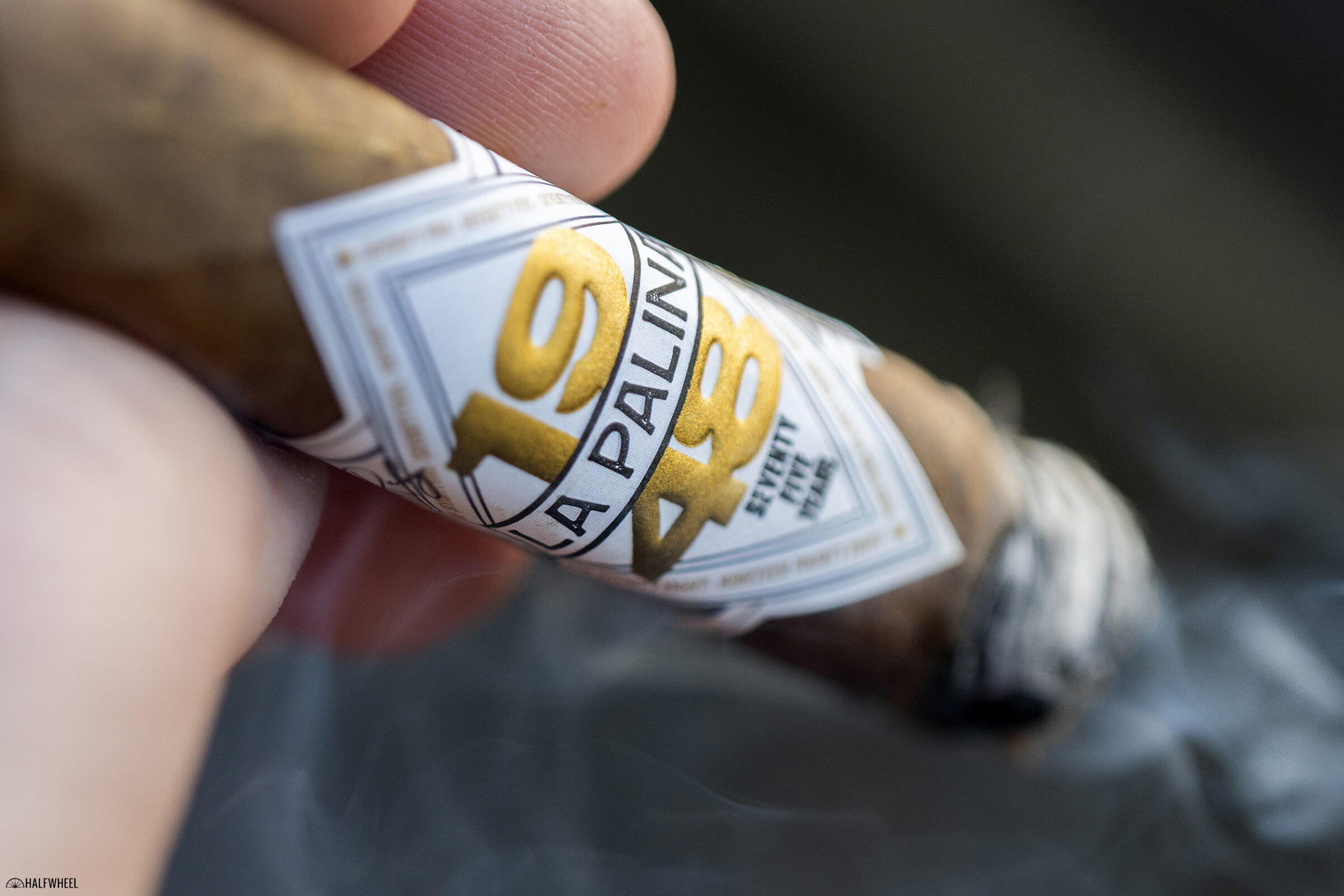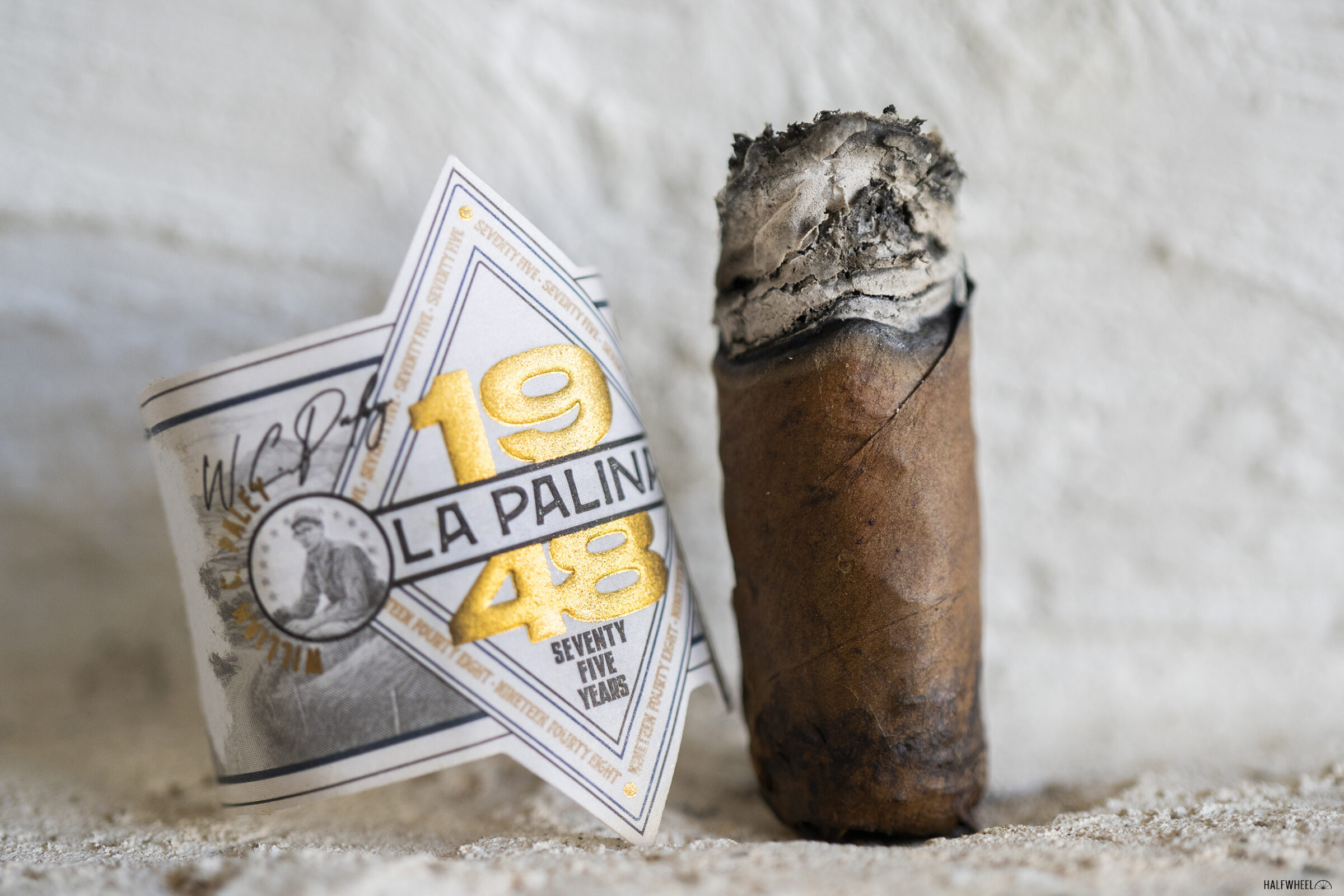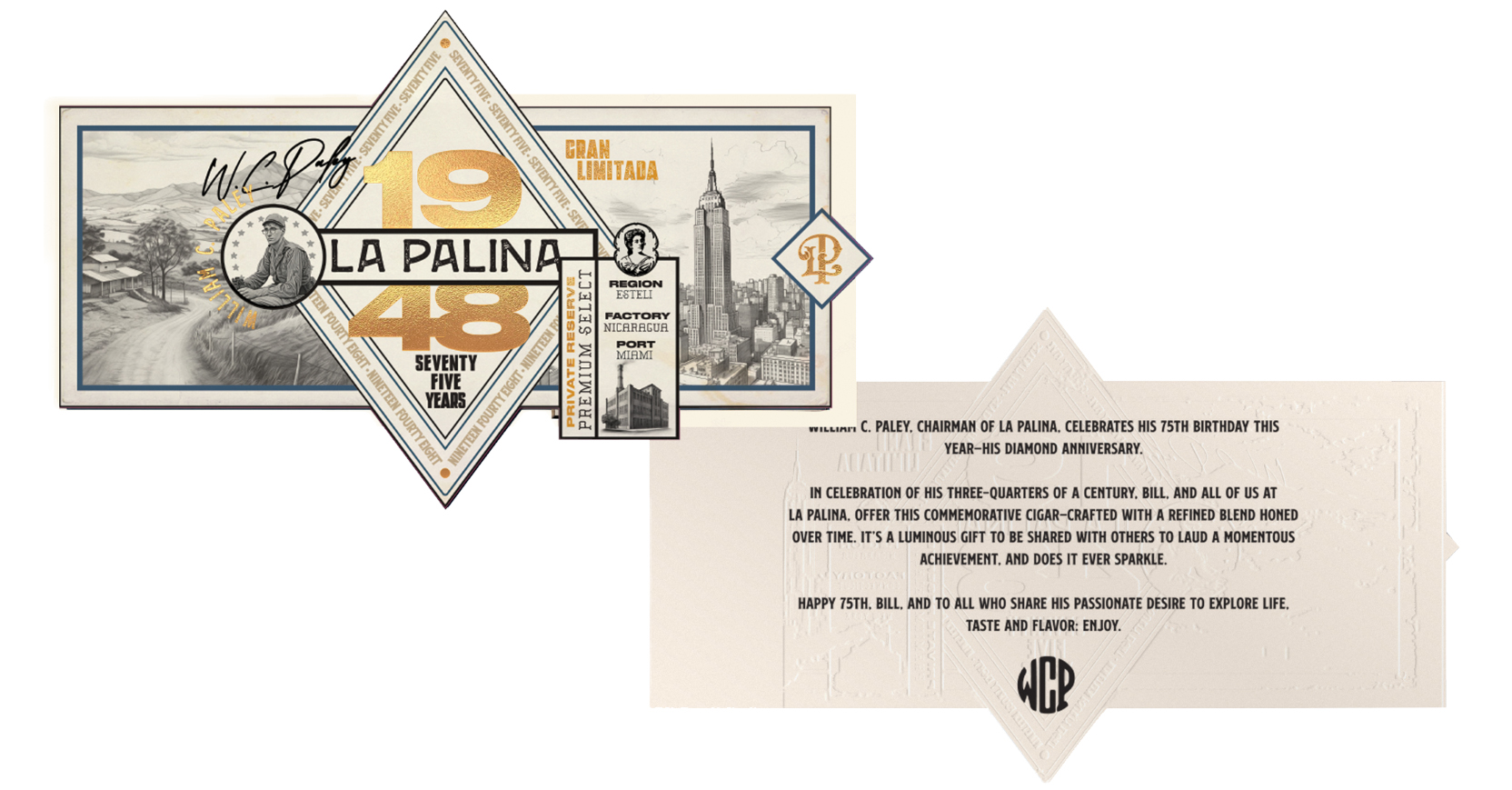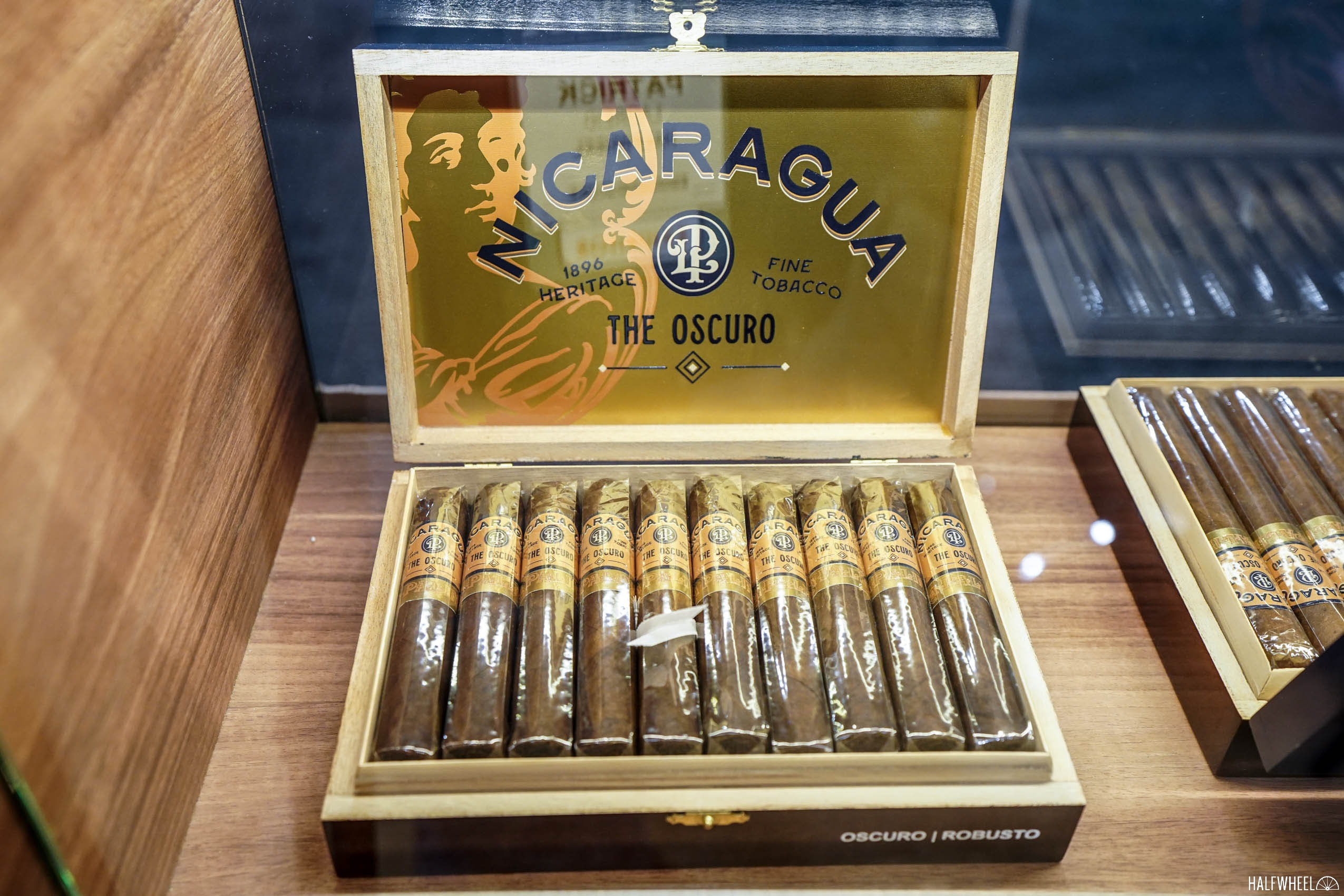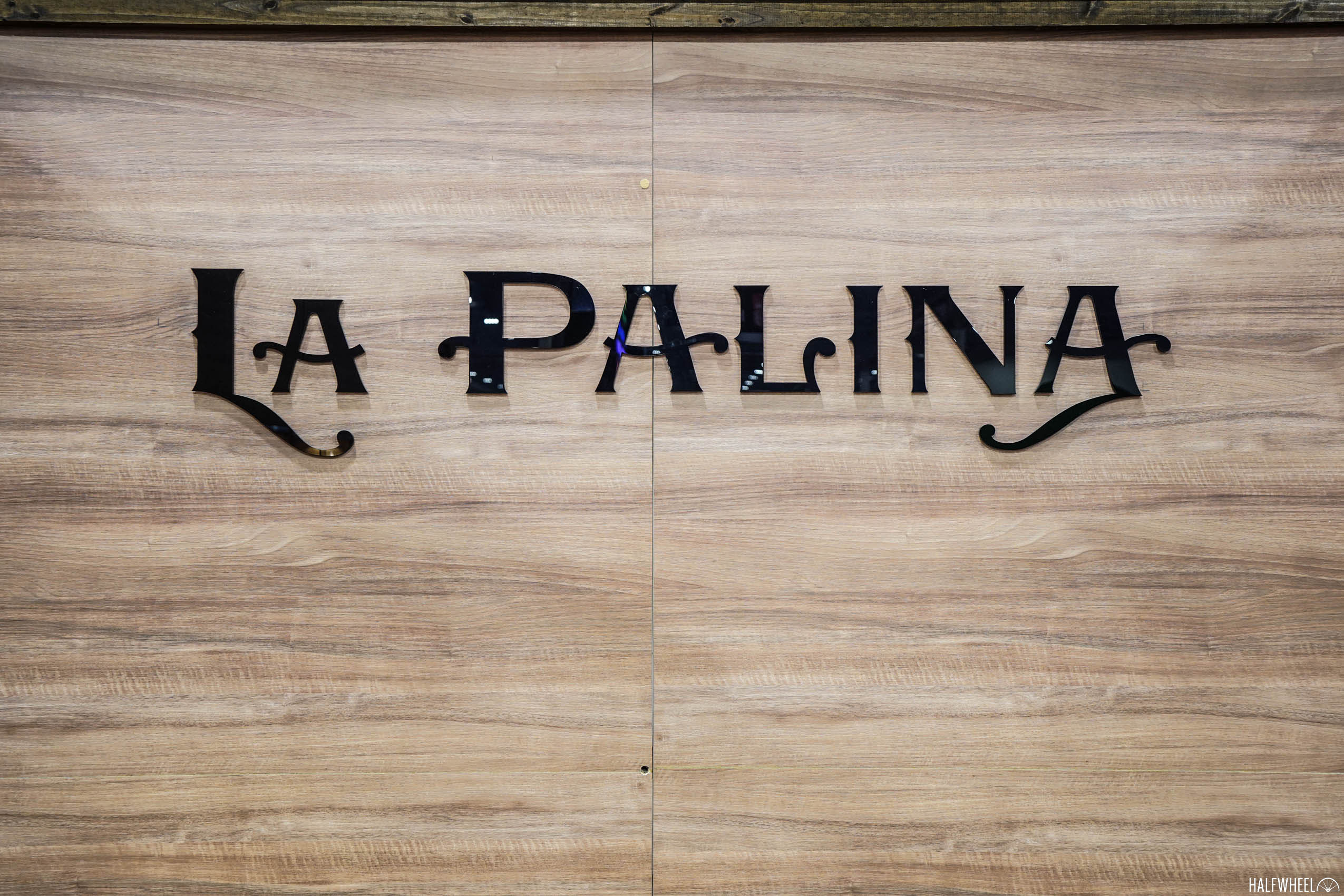Earlier this year, Bill Paley, La Palina’s chairman, celebrated his 75th birthday, and as cigar companies are wont to do, a new blend was created to commemorate the occasion. The La Palina 1948—named after Paley’s birth year—debuted in four box-pressed vitolas during the 2023 PCA Convention & Trade Show, and while three of the sizes are regular production, the Diadema viola is limited to 500 boxes of 10 and was sold exclusively to retailers who attended and placed orders at the 2023 PCA Convention & Trade Show.
While the wrapper covering the blend is a sun-grown Sumatra leaf grown in Ecuador that has been aged for two years, both the binder and filler tobaccos were sourced from Oliva Cigar Co.’s farms in Nicaragua. In addition, Oliva was enlisted to make the cigars at its TABOLISA factory that is located in Estelí, Nicaragua.
“I am thrilled to have been able to bring this cigar series to life, as it honors both my family and our company,” said Bill Paley in a press release. “The 75-year journey I have taken, to where I am now, has been a marvelous adventure. My grandfather was a key figure in starting the company, and this cigar is also a tribute to his legacy and our continued success.”
The La Palina line currently includes four box-pressed vitolas:
- La Palina 1948 Churchill (7 x 52) — $25 (Box of 10, $250)
- La Palina 1948 Toro (6 x 52) — $24 (Box of 10, $240)
- La Palina 1948 Robusto (5 x 52) — $22 (Box of 10, $220)
- La Palina 1948 Diadema (6 x 46) — $23 (Box of 10, $230)
- Cigar Reviewed: La Palina 1948 Diadema
- Country of Origin: Nicaragua
- Factory: Tabacalera Oliva de Nicaragua S.A.
- Wrapper: Ecuador (Sumatra)
- Binder: Nicaragua
- Filler: Nicaragua
- Length: 6 Inches
- Ring Gauge: 46
- Vitola: Diadema
- MSRP: $23 (Box of 10, $230)
- Release Date: November 2023
- Number of Cigars Released: 500 Boxes of 10 Cigars (5,000 Total Cigars)
- Number of Cigars Smoked For Review: 3
The combination of a dark brown wrapper and fairly unique vitola makes the La Palina 1948 Diadema is an attractive cigar from a visual perspective. The wrappers have almost no oil or tooth at all, but they are covered in overt veins and also have a multitude of bumps all over them. In addition, all three cigars are nicely spongy when squeezed, but I find a small soft spot on the back of the cigar in-between the band and the feet on two of the cigars. Aromas from the wrappers include a very obvious sweet earth note along with some generic woodiness, barnyard, nuttiness, chalk and coffee beans. Because of the small foot opening, aromas from the feet of the cigars are very similar to those emanating from the wrappers, but I do notice that the woodiness is pronounced to remind me of oak, and there is some additional vanilla sweetness. Finally, after straight cuts, the cold draws bring flavors of peanut butter, more sweet oak, dry hay, cocoa nibs, and milk chocolate sweetness.
The small feet of the La Palina light up quickly and immediately bring notes of light spice, white pepper and gritty earth, but those quickly fade as the main flavor combination of peanuts and hay takes over the profile. Additional flavors of leather tack, cocoa nibs, earth and creamy oak show up at various points, but one of the cigars features a slight vegetal note that becomes a bit more noticeable as the first third burns down. All three cigars feature the same combination of light white pepper and vanilla bean sweetness on the retrohale, and while neither note is all that aggressive at the moment, they do seem to be gaining strength. The flavor ends the first third at a solid medium, while both the body and strength lag behind at mild plus and just under the medium mark, respectively. There are absolutely no issues when it comes to construction, as the burn lines, smoke production and draws are all performing wonderfully so far.
Dry hay and creamy peanuts continue to reign supreme in the profile of the cigar during the second third, followed by secondary flavors of dark chocolate, bitter espresso, nutmeg, and earth. In addition, the creamy oak flavor from the first third has become noticeably more generic—I would describe it as a general woodiness now—but the vegetal note present on one cigar has grown a bit stronger, and there is virtually no change to the vanilla bean sweetness and black pepper that is present on the retrohale. Flavor bumps up slightly to land at a point just over the medium, the body increases to just under the medium and the strength increases to a solid medium. Construction-wise, the draws and smoke production continue to be trouble-free for all three cigars, but all three do need corrections with my lighter to stay on track.
The final third of the La Palina 1948 is a virtual carbon copy of the second third when it comes to flavors, as the creamy peanuts and hay combination have no problems holding on to the top spot until the end of the cigar. There are also a few surprises in the secondary flavors—a list that includes the familiar generic wood, cocoa nibs, coffee beans, nutmeg, earth, and leather—or the retrohale, the latter of which is still made up of the same combination of black pepper and vanilla sweetness. The flavor ends the cigar at just over medium, but the body increases enough to hit a solid medium, and the strength bumps up ever-so-slightly to move to a point slightly above the medium mark. Finally, the construction for all three cigars has reverted back to what it exhibited in the first third, meaning there are zero issues with the burns, draws, or amount of smoke coming from the feet, and I put the nubs down with about an inch remaining.
Final Notes
- This cigar’s combination of small stature, perfecto vitola and soft box press immediately reminded me of some of the old Cubans I used to review back in the Smoking Stogie days. I don’t know if La Palina was attempting to recreate the visual look of those types of cigars, but as someone who has smoked more than a few of those types of cigars from that era, if that was a consideration, the company nailed it.
- While the burn lines on all three cigars were far from straight—in fact, they were wonky at just about every point during all three cigars—and each of the three cigars needed a correction with my lighter during the second third.
- There is quite a bit of information on the band of this cigar: not only are there illustrations of how Estelí, Nicaragua and Manhattan looked in 1948 but there is also an image of Paley when he served in Vietnam as part of his military service as well as a depiction of his signature. In addition, the backside of the band is a statement about how this blend was created to commemorate Paley’s 75th birthday.
- Speaking of the bands, there was quite a bit of glue holding the bands on all three cigars together, enough that when I took them off, small pieces of the wrapper came with them. There was not enough damage to affect the overall construction in any significant way, but it is something to be aware of if you are smoking these cigars.
- La Palina has worked with a number of factories over the years, it turned to Oliva to make the La Palina 125 Años, which marked the 125th anniversary of the company.
- The cigars smoked for this review were purchased by halfwheel.
- Final smoking time for all three cigars averaged out to one hour and 19 minutes.
As someone who is approaching the 50-year mark much too quickly, I can appreciate the idea of celebrating a 75th birthday with a new blend. The La Palina 1948 Diadema is a worthy addition to the company’s line-up, with enjoyable flavors of creamy peanuts and dry hay on the palate that are accentuated by vanilla bean sweetness and black pepper on the retrohale. Each of the three cigars ran into burn issues during the second third—albeit in different parts of the second third—but the draws were wonderful and there was no dearth of smoke at any point. In the end, I enjoyed the La Palina 1948 Diadema for the celebratory creation that it is, and would have no issues recommending it to someone who is looking for a medium-strength, easy-to-smoke blend.

